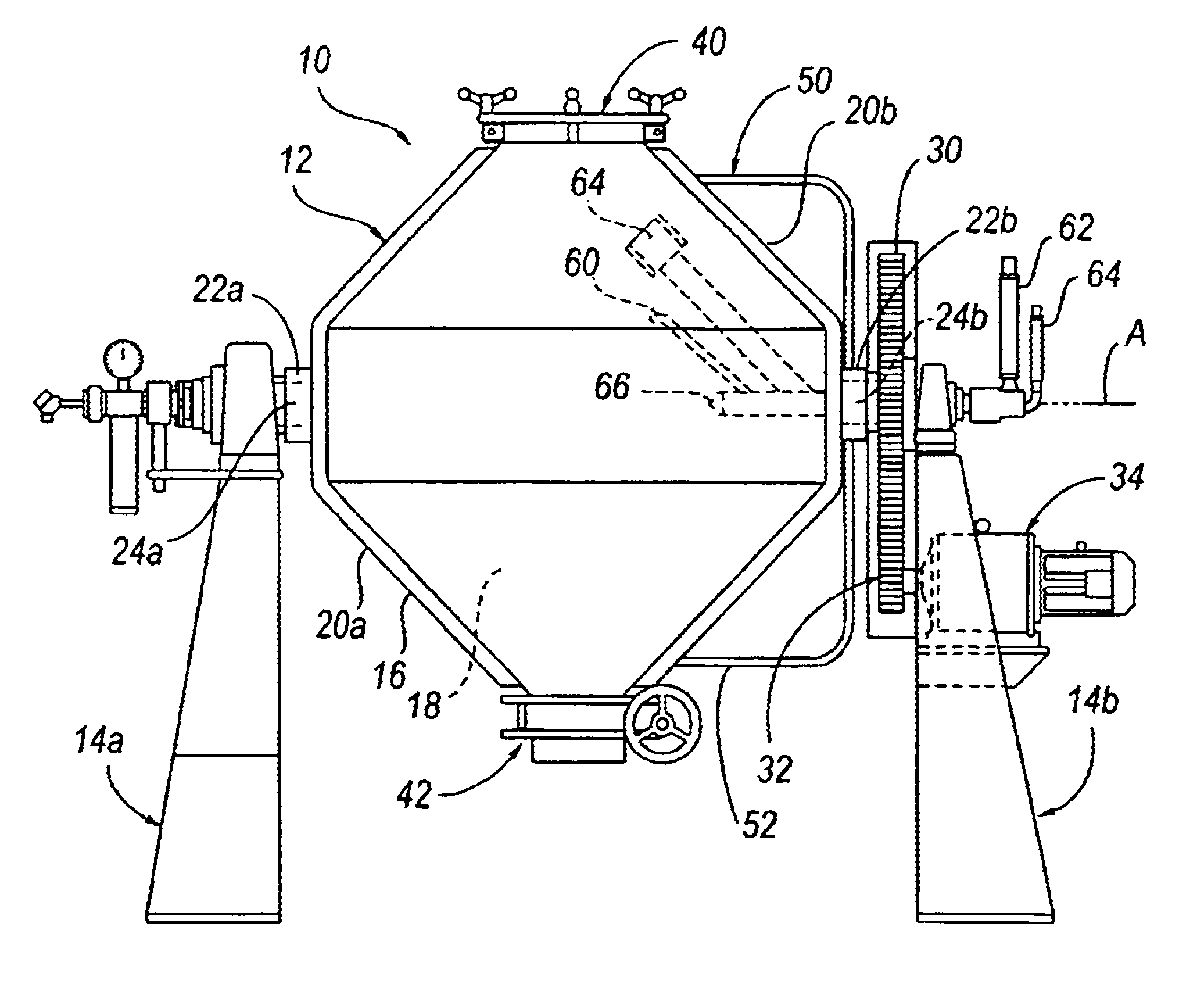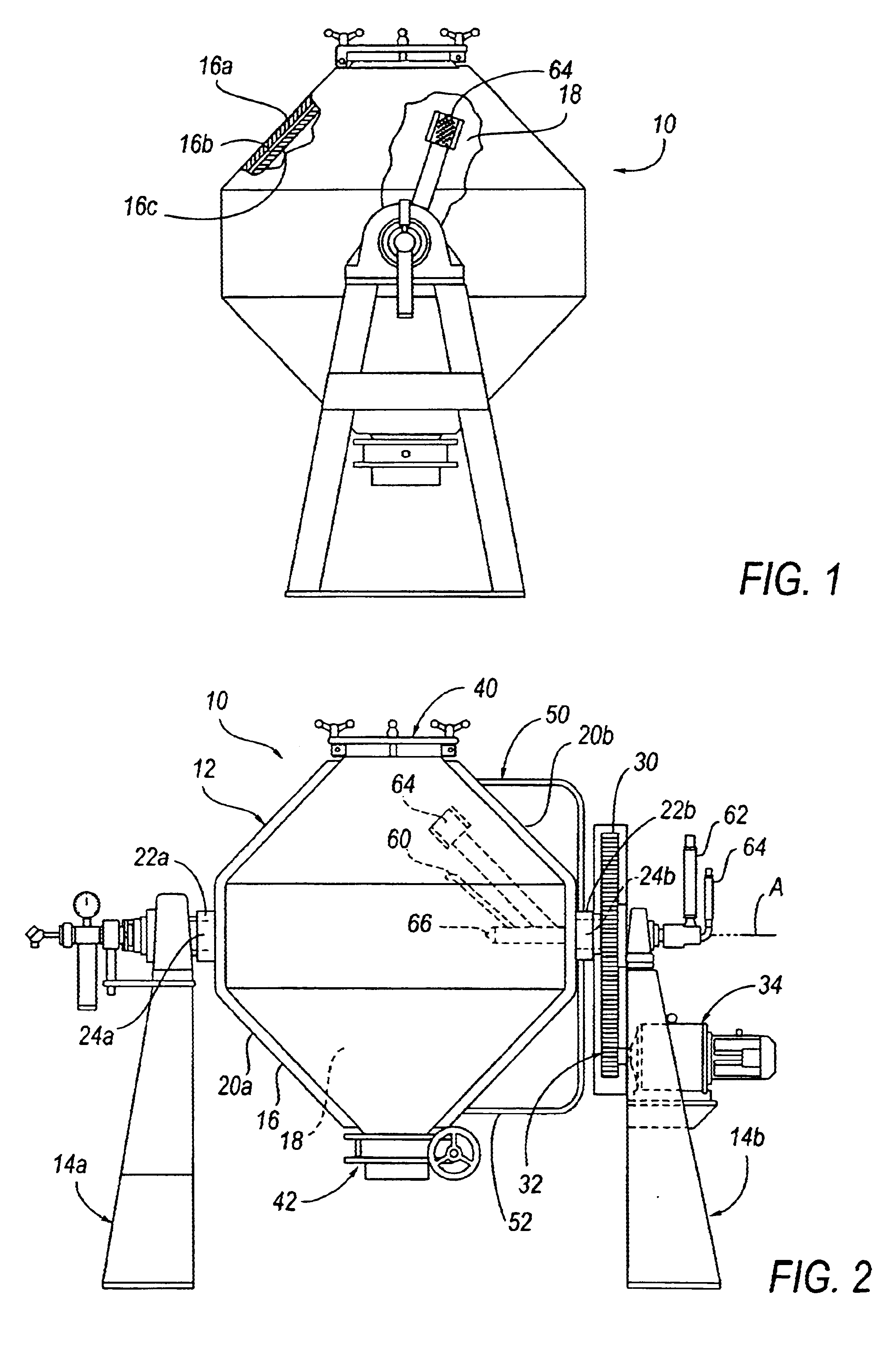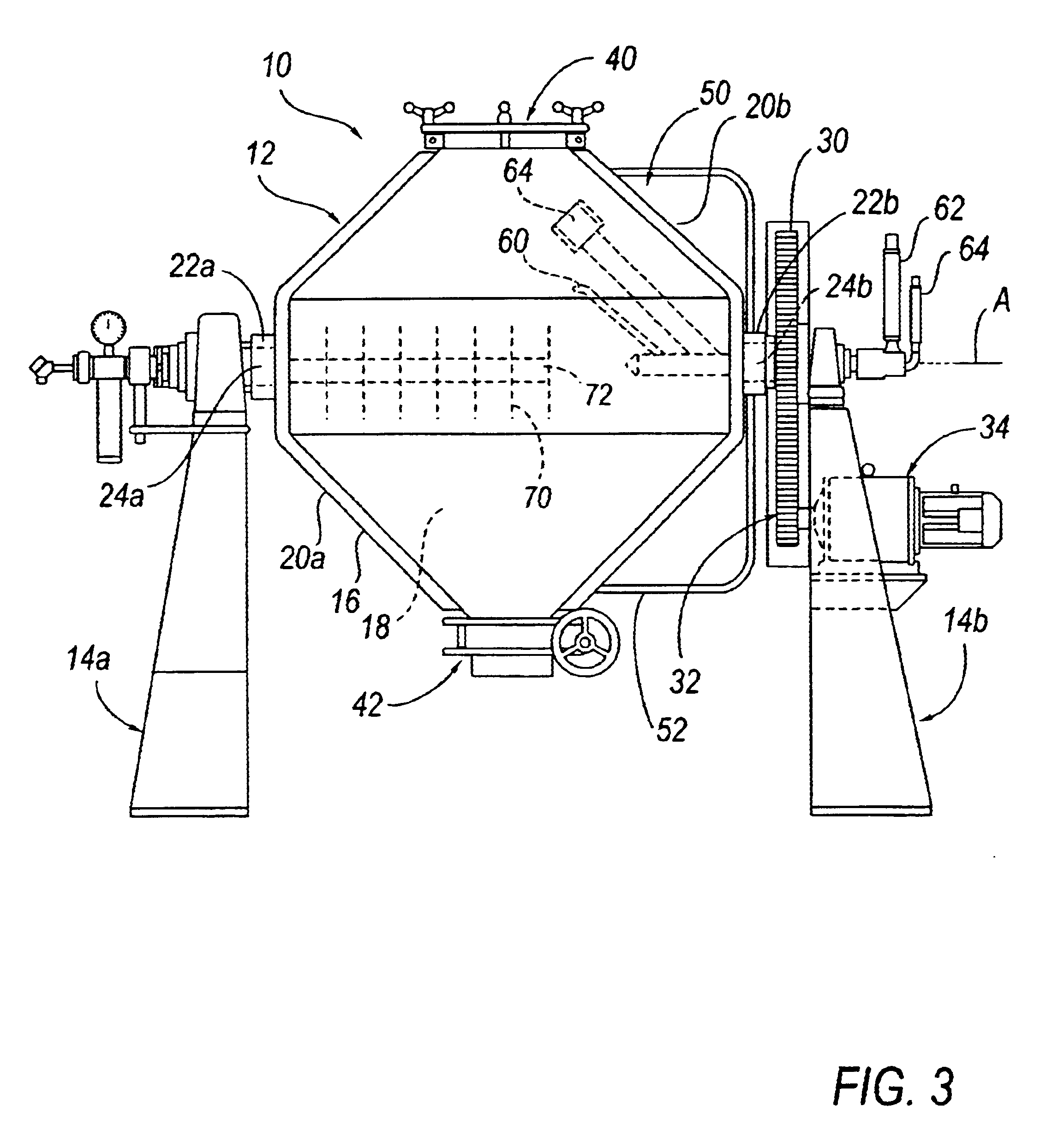Methods for making molecular sieves
a technology of molecular sieves and sieves, which is applied in the direction of molecular sieve aluminophosphates, silicon compounds, physical/chemical process catalysts, etc., can solve the problems of inability to use a conventional mechanical stirrer, inability to uniformly heat reaction mixtures, and inability to separate water, etc., to achieve high uniform and rapid heat distribution, low water volume, and maximize the effect of molecular sieves
- Summary
- Abstract
- Description
- Claims
- Application Information
AI Technical Summary
Benefits of technology
Problems solved by technology
Method used
Image
Examples
example 1
1800 grams of silica (HiSil 233, a hydrated silica manufactured by PPG) were placed in a Baker-Perkins mixer. To this were added 78 grams of NaAlO.sub.2 with mixing. Then 1344 grams of a 35% aqueous solution of tetraethylammonium hydroxide (TEAOH) and 144 grams of a 50% aqueous solution of NaOH were added with mixing. Then were added 187.2 grams of acid-peptized and neutralized Versal 250 alumina (45 wt % Al2O3, 55 wt % H2O) followed by 84 grams of kaolin clay and 18 grams Beta zeolite. To this was added 1035 grams of deionized water and mixed at 140.degree. F. until the mix went to a paste. The mix was then heated to 160.degree. F. with slow mixing until it reached an extrudable form (volatiles level of 55% by LOI). The mix was extruded through a 1 / 16-inch die using a Ram extruder, and placed on a screen to dry at room temperature to a volatiles content of 45 wt %. Molar ratios in the extrudate were as follows:
R.sup.+ / SiO2=0.12
OH.sup.- / SiO2=0.18
M.sup.+ / SiO2=0.10
SiO2 / Al2O3=34
H2O / ...
example 2
12,000 grams of HiSil 233 were placed in a Littleford mixer. To this were added 240 grams of NaAlO.sub.2 and 120 grams of kaolin clay, and mixed for 15 minutes. Next were added 12,000 grams of a 35% aqueous solution of TEAOH, followed by 640 grams of a 50% aqueous solution of NaOH, then 240 grams of NaNO.sub.3 and 40 grams of Na.sub.2 B.sub.2 O.sub.4.8H.sub.2 O, and mixed for three hours. Then 20 grams of Beta zeolite were added and mixed for another 15 minutes. Steam heat, at 160.degree. F., was applied to the mixer jacket to reduce volatiles level in the mix to 51.5 wt %. The mix was then dumped out of the mixer and loaded into the Abbe crystallizer. Molar ratios in the mix were as follows:
R.sup.+ / SiO2=0.16
OH.sup.- / SiO2=0.20
M.sup.+ / SiO2=0.08
SiO2 / Al2O3=94
H2O / SiO2=2.5
The mix was crystallized for 48 hours at 280.degree. F. (oil inlet temperature of 300.degree. F.) with a rotation speed of 10 rpm. At the conclusion of the run, the unit was cooled to room temperature and the catalys...
example 3
6000 grams of HiSil WB-15D silica were placed in a Littleford mixer. To this were added 1500 grams of 98% tetrapropylammonium bromide (TPA-Br) and mixed for 15 minutes. Next were added 3000 grams of a 35% aqueous solution of TEAOH and mixed for three hours. The mix was then dumped out of the mixer and loaded into the Abbe crystallizer. Molar ratios in the mix were as follows:
R.sup.+ / SiO2=0.14
OH.sup.- / SiO2=0.08
H2O / SiO2=3.2
The mix was crystallized for 20 hours at 280.degree. F. with a rotation speed of 10 rpm. At the conclusion of the run, the unit was cooled to room temperature and the catalyst was dumped through the ball valve. The catalyst was then washed three times with a three-fold excess of a 10% ammonium nitrate solution containing 6 grams of nitric acid per 1000 grams of solution. The catalyst was then dried in a vacuum oven overnight at 120.degree. C., then calcined in air at 1100.degree. F. for six hours. X-ray diffraction analysis showed the catalyst to be about 100% ZSM...
PUM
| Property | Measurement | Unit |
|---|---|---|
| temperature | aaaaa | aaaaa |
| molar ratio | aaaaa | aaaaa |
| mole ratio | aaaaa | aaaaa |
Abstract
Description
Claims
Application Information
 Login to View More
Login to View More - R&D
- Intellectual Property
- Life Sciences
- Materials
- Tech Scout
- Unparalleled Data Quality
- Higher Quality Content
- 60% Fewer Hallucinations
Browse by: Latest US Patents, China's latest patents, Technical Efficacy Thesaurus, Application Domain, Technology Topic, Popular Technical Reports.
© 2025 PatSnap. All rights reserved.Legal|Privacy policy|Modern Slavery Act Transparency Statement|Sitemap|About US| Contact US: help@patsnap.com



